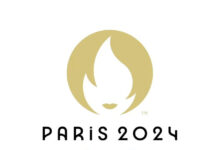
Apple Music recently introduced a significant update to its royalty policy, announcing an increase of up to 10% for tracks delivered in spatial audio. Now independent labels, distributors, and trade groups are raising their concerns about technological favoritism.
Spatial audio is a high-resolution, 360 audio format developed in partnership with Dolby Atmos. The cost associated with creating a spatial audio mix can range from $500 per track to upwards of $15,000 per album, posing a significant financial burden for many independent labels.
Add in the extra requirement that more than 50% of a label’s revenue must come from tracks available in spatial audio to qualify for the uplift, and some in the industry fear that many labels wouldn’t see that cost recouped, even with a full 10% royalty rise.
Concerns have been raised about the artistic and practical challenges of converting older catalogs, with some recordings lacking the necessary stems for conversion or artists being reluctant to alter their original masters.
In a letter to labels and partners, Apple Music said, “This change is not only meant to reward higher quality content, but also to ensure that artists are being compensated for the time and investment they put into mixing in Spatial.” The company also highlights that a significant portion of the indie-label community is already delivering content in spatial audio, with a notable increase in the amount of spatial content year over year.
Apple Music’s royalty changes come at a time when many streaming services are reconsidering how they pay artists. In March 2023, Deezer rolled out its new User Centric Payment System, where each user’s subscription money now only goes to the artists they listen to each month – not by overall global streams.
On the other end of the spectrum, artists and labels have raised concerns over Spotify’s royalty payout change, which withholds royalties for songs with fewer than a thousand streams in a year. This policy is even stricter for functional tracks, like white noise, indicating a challenging landscape for artists seeking compensation through streaming.
A recent Luminate study revealed that less than 15% of tracks would have met Spotify’s new royalty criteria in 2023, while a staggering 24.8% of tracks on streaming services didn’t receive any streams at all.









